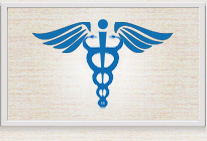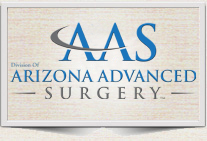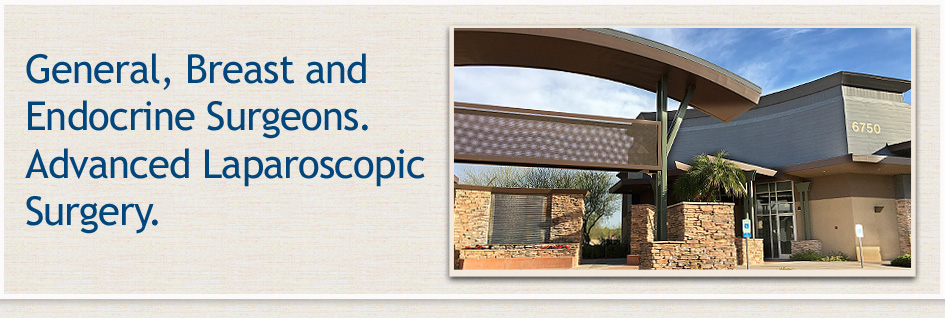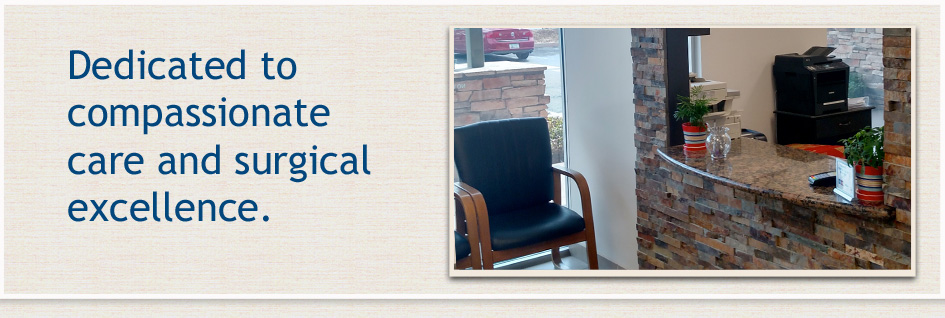Hernias
A hernia is the abnormal bulging of an internal organ (usually the intestine) through an opening in the muscles of the abdominal wall. The hernia can be caused by stress on the abdominal muscles, or in some cases, is caused by a congenital flaw. Doctors Allen A. Agapay and Jordan J. Glenn specialize in the most advanced surgical techniques for repair and treatment of many different types of hernias. They provide state-of-the-art laparoscopic hernia surgery as well as the latest in open hernia repair techniques. The team also performs robotic-assisted surgery for hernias. The da Vinci robotic surgery system, equipped with tiny instruments and a 3D camera, offers surgeons better visibility inside the patient's body and finer control while they repair the hernia. Because the incisions required are so small, most patients experience less pain after surgery and a quicker return to normal activity.
Inguinal (Groin) Hernia
Inguinal hernias are the most common type of hernia and will appear as a bulge on one or both sides of the groin. An inguinal hernia can be an emergency if the intestine becomes trapped within the hernia sac. You should seek immediate medical attention if the pain is very severe and the bulge won't go away when you lie down or put pressure on the bulge.
Symptoms
- A visible bulge on one or both sides of the groin
- Discomfort or sharp pain while lifting, bending over or straining
- Weakness, dull ache, pressure, or burning sensation in the groin or scrotum
When part of the intestine becomes trapped (incarcerated) within the hernia sac, it is a medical emergency. Symptoms of an incarcerated inguinal hernia include:
- Severe pain and redness
- Pain that keeps getting worse
- Fever
- Rapid heart rate
- Nausea and vomiting
Seek medical treatment immediately if you experience any symptoms of an incarcerated hernia.
Diagnosis
To diagnose an inguinal hernia, your doctor will conduct a physical examination. During the exam, he will look and feel for a bulge in your groin or scrotal area.
Treatment
Inguinal hernias can be repaired with either open or laparoscopic surgery, including robotic-assisted laparoscopic surgery. Doctors Agapay and Glenn will carefully evaluate your hernia to determine the best method of repair.
Open inguinal hernia repair: is performed using local and/or general anesthesia. During this surgery, your surgeon makes a small incision in the groin, identifies the defect and returns the herniated tissue to the abdomen. The surgeon then reinforces the lower abdominal wall with mesh. This results in a very strong repair. All of the muscle and skin layers are then closed with absorbable suture.
Laparoscopic inguinal hernia repair: is performed using general anesthesia using a camera which is inserted through a small incision by the navel and instruments that are inserted through small incisions on the lower abdomen. Your surgeon returns the herniated tissue to the abdomen and then reinforces the inside of the lower abdominal wall with a piece of mesh. This procedure is well-suited for patients with hernias on both sides of the groin, or with a recurrent hernia. Not everyone is a candidate for the laparoscopic approach. It is not the best option if the hernia is very large or if the patient has previously had pelvic surgery.
da Vinci Robotic Assisted Surgery: During this surgery, surgeons control a robotic-assisted surgical device that provides a 3D view inside your body and very precise instrument control while they repair your hernia. Most hernias can be repaired using this method, including some hernias that cannot be repaired with conventional laparoscopic surgery. Only very small incisions are needed so recovery is quicker and less painful than with traditional open surgery.
Femoral Hernia
A femoral hernia will appear as a bulge near the groin or thigh and occurs when a loop of intestine or abdominal tissue pushes through a tear or weak spot in the muscle layer of the abdomen.
Symptoms
Most femoral hernias do not cause symptoms. The bulge may be visible below the groin in the upper thigh. Some symptoms may include discomfort when standing, lifting heavy objects or straining.
When tissue inside the hernia becomes stuck or trapped (incarcerated) in the bulging abdominal muscle, it can lead to a potentially life-threatening condition and requires emergency surgery. Symptoms include:
- Sudden groin pain
- Sudden abdominal pain
- Severe nausea or vomiting
Seek medical treatment immediately if you experience any of these symptoms.
Diagnosis
To diagnose a femoral hernia, the doctor conducts a physical examination. If there is any doubt about the physical exam findings, an ultrasound or a CT scan may be performed.
Treatment
Femoral hernias are more likely to become incarcerated than other types of hernia. There is no treatment option other than surgery. Left untreated, most hernias will increase in size. Our doctors offer both open and laparoscopic hernia repair options, including robotic-assisted laparoscopic surgery. They will carefully evaluate your hernia before recommending a type of surgery.
Open femoral hernia repair: This is performed using general anesthesia. The surgeon makes an incision in the patient's groin area, and locates the hernia. The surgeon may also remove extra hernia tissue. The surgeon then pushes the intestine back into place in the abdomen, reinforces the abdominal wall with a piece of mesh, then closes the weakened abdominal muscles with stitches.
Laparoscopic femoral hernia repair: Our surgeons perform laparoscopic femoral hernia repair through several small incisions using a laparoscope (thin tube with a tiny video camera attached). The camera gives them an enlarged view of the hernia and surrounding tissue while they repair the defect and reinforce the muscle wall with synthetic mesh. This surgery is performed using general anesthesia.
da Vinci Robotic Assisted Surgery: This type of surgery is performed through very small incisions while your surgeon controls a robotic surgery system, equipped with tiny instruments and a 3D camera, that provides a close-up view inside your body during the operation. Most patients experience quicker healing after this type of surgery.
Ventral, Umbilical and Incisional Hernias
A ventral hernia happens when a loop of intestine or abdominal tissue pushes through a weak spot in the abdominal wall. Common types of ventral hernias are:
Umbilical Hernia: When the hernia is at the navel or belly button. Umbilical hernias may occur in babies just after birth and may resolve themselves as the child matures. But some persist and adults can also experience umbilical hernias.
Incisional Hernia: When the hernia is at the site of a prior abdominal incision. This type of hernia can appear shortly after surgery or many years later.
Symptoms
Symptoms of a ventral hernia include:
- A bulge or lump in your abdominal area.
- Discomfort or sharp pain when straining or lifting that goes away when you rest
- An aching or burning feeling at the site of the bulge
When tissue inside the hernia becomes stuck or trapped in the bulging abdominal muscle, it can lead to a potentially life-threatening condition known as "strangulation," which requires emergency surgery. Symptoms of hernia strangulation include:
- Abdominal pain
- Profuse sweating
- Rapid heartbeat
- Severe nausea, vomiting and high fever
Seek medical treatment immediately if you experience any symptoms of a strangulated hernia.
Diagnosis
To diagnose a ventral hernia, the doctor conducts a physical examination of your abdomen, and specifically, the area where a ventral hernia may exist. You may be asked to stand and cough so the doctor can feel the hernia. A CT scan may be performed for further diagnosis.
Treatment
Ventral hernias can be repaired with either open or laparoscopic surgery, including robotic-assisted laparoscopic surgery. Doctors Agapay and Glenn will carefully evaluate your hernia to determine which type of surgery is right for you.
Open ventral hernia repair: This is performed using general anesthesia. Your surgeon makes an incision in the abdominal wall over the hernia and pushes the herniated tissue back into place, repairs the defect in the abdominal wall, and reinforces it with a synthetic mesh to provide additional support.
Laparoscopic ventral hernia repair: During a laparoscopic ventral hernia repair, the surgeon makes several small incisions in the abdomen and inserts a laparoscope (thin tube with a tiny video camera attached). The camera projects onto a monitor. This allows the surgeon to view the hernia and surrounding tissue close-up while operating to repair the hernia and reinforce the muscle wall with synthetic mesh. This is performed using general anesthesia. The benefits of laparoscopic repair are less scarring, faster healing time and less pain. However laparoscopic surgery may not be the best option if the hernia is very large or if there is too much prior scar tissue.
da Vinci Robotic Assisted Surgery: Your surgeon operates through a few small incisions using a robotic-assisted surgical device that provides a 3D view inside your body and gives your surgeon precise control of surgical instruments during your hernia repair.

Insurances We Accept
Click the "Learn More" link below for a full list of the insurance plans we accept. If you don’t see your plan on the list, or if you have any questions, please call us at 602-843-8317. Learn More

Arizona Advanced Surgery
Doctors Agapay and Glenn are proud to be a division of Arizona Advanced Surgery. Learn More



